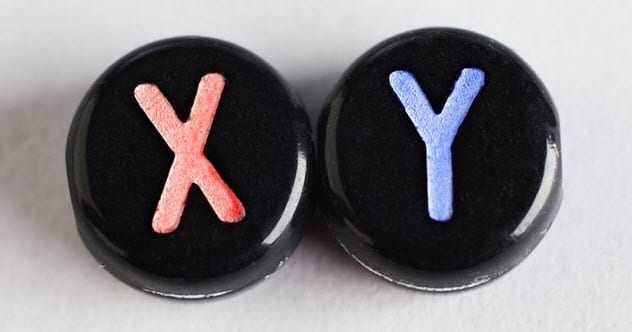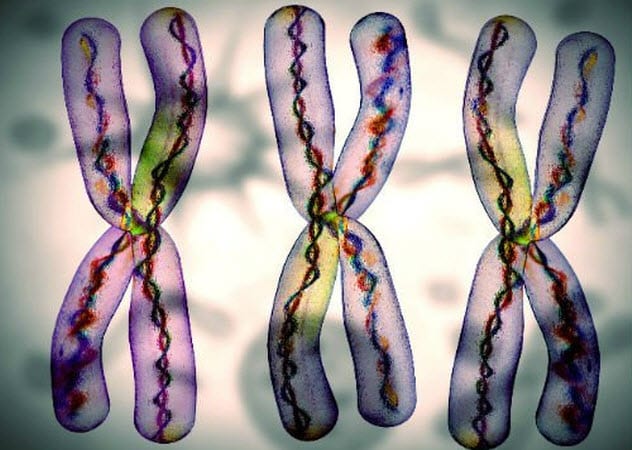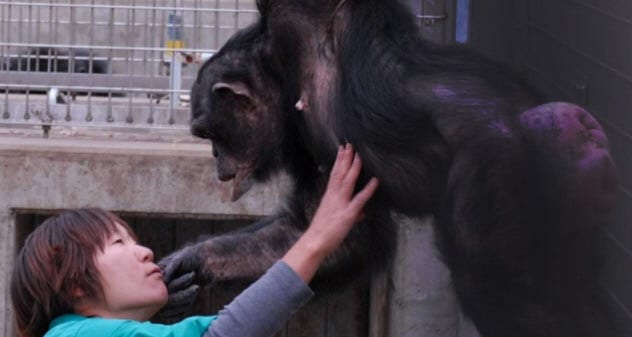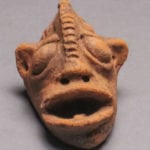 Humans
Humans  Humans
Humans  Movies and TV
Movies and TV 10 Holiday Movies Released at Odd Times of the Year
 Politics
Politics 10 Countries Where Religion and Politics Are Inseparable
 Weird Stuff
Weird Stuff 10 Freaky Times When Famous Body Parts Were Stolen
 Miscellaneous
Miscellaneous 10 Interesting Things Manufacturers Stopped Making and Why
 Gaming
Gaming 10 Funny Tutorials in Games
 History
History 10 Fascinating Little-Known Events in Mexican History
 Facts
Facts 10 Things You May Not Know about the Statue of Liberty
 Movies and TV
Movies and TV 10 Movie Adaptions That Brought Popular Songs to Life
 Health
Health 10 Miraculous Advances Toward Curing Incurable Diseases
 Humans
Humans 10 One-of-a-kind People the World Said Goodbye to in July 2024
 Movies and TV
Movies and TV 10 Holiday Movies Released at Odd Times of the Year
 Politics
Politics 10 Countries Where Religion and Politics Are Inseparable
Who's Behind Listverse?

Jamie Frater
Head Editor
Jamie founded Listverse due to an insatiable desire to share fascinating, obscure, and bizarre facts. He has been a guest speaker on numerous national radio and television stations and is a five time published author.
More About Us Weird Stuff
Weird Stuff 10 Freaky Times When Famous Body Parts Were Stolen
 Miscellaneous
Miscellaneous 10 Interesting Things Manufacturers Stopped Making and Why
 Gaming
Gaming 10 Funny Tutorials in Games
 History
History 10 Fascinating Little-Known Events in Mexican History
 Facts
Facts 10 Things You May Not Know about the Statue of Liberty
 Movies and TV
Movies and TV 10 Movie Adaptions That Brought Popular Songs to Life
 Health
Health 10 Miraculous Advances Toward Curing Incurable Diseases
Top 10 Facts And Mysteries Revealed By Chromosomes
Inside every organism are molecules called chromosomes. These threadlike structures hold genetic instructions, and every human cell normally has 23 pairs. Under the microscope, so to speak, these molecules can prove the history books wrong and solve long-standing mysteries about impostors.
They reveal rare conditions, where talent comes from, and even ancient massacres. Perhaps the most surprising discoveries relate to the human sex chromosomes X and Y. One is unique among chromosomes, and the other is dying.
10 The Failing Y

The Y is the “guy” in sex chromosome arrangements. It also carries the master switch that determines a baby’s gender. If the Y gets passed along, the resulting XY brings a boy. When the man’s X enters the deal, the XX makes a girl.
The Y is degenerating at a rate which predicts its extinction in 4.6 million years. The chromosome started out happy enough. When the first mammals appeared 166 million years ago, the now-shriveled Y was the same size as X. Both also contained all the same genes.
However, Y’s problem is that it exists as a single copy. The rest are pairs and with good reason. In every generation, genes shuffle to get rid of damaging mutations. Y’s single status prevents this. Without the shuffling, Y lost so many genes that it became the only chromosome not necessary for life.
Even if Y vanishes, men will not join the dodo. Other male mammals have already lost their Y chromosome. Their master switch gene simply jumped to another chromosome. Unfortunately, this restarted the degeneration—the newly assigned sex chromosome also replicates as a single copy.[1]
9 Third Gender Influence

For a long time, the origins of gender were thought to follow a simple recipe. If the dad passed on his Y chromosome, the infant was male. Otherwise, a daughter.
In 2018, researchers discovered a third influence beyond X and Y. It was not another chromosome but a genetic regulator. These things hang around on something previously called “junk DNA.” The latter holds no genes. However, its regulators influence the behavior of genes. When the time comes to determine a baby’s sex, the newly discovered regulator steps up strongly—but it has a dark side.
For some reason, the regulator is also capable of interfering with the gender-forming process. When this happens, infants are often born with intersex traits—having both male and female characteristics. Despite its bad influence, the new gene enhancer could help to unravel intersex conditions, something that remains poorly understood.[2]
8 The X Riddle

The Y chromosome was not the only one that changed. In the beginning, the female X resembled other chromosomes. For some reason, evolution changed it. The X chromosome is remarkably resistant to mutation, and most puzzling of all, its genes are active in few human tissues.
For over 10 years, scientists could not explain why X was different. In 2016, the answer appeared in the form of gene expression. This process translates genetic information into observable traits. In other words, the genes on the X chromosome are not expressed (active) in a lot of human tissues.
Some genes need fast expression. For example, when we need more oxygen, genes that produce more blood cells are quickly expressed. The study found that X slows down expression. For this reason, most speedy genes abandoned it and moved elsewhere over time.
In turn, X became the destination for genes from other chromosomes that did not need quick activation. That is why the current X collection is almost underactive compared to those of other chromosomes.[3]
7 Ancient Male Bottleneck

The modern male genome holds a mystery. From 5,000 to 7,000 years ago, it would appear that something caused most men to die in Europe, Asia, and Africa. This disaster left 17 women for every man.
Since the bottleneck was established in 2015, some scientists have suggested that a natural factor affected male children. Others believe that there was no die-off. The latter theory held that men with more social power produced more kids and thus blotted out the genetic signature of those who did not.
A 2018 study found the likeliest answer—warfare between patrilineal clans. In such groups, men from the same family remain close. Had the clans practiced wholesale slaughter of other men, entire male lineages would have been removed from the gene pool.
If this was the case, it also suggested that most men did not die off. Instead, the Y chromosome became less diverse. This “many men, few families” marker resembled that of a mass extinction. The evidence was not just genetic. When researchers ran simulations, the only scenario that produced a Y bottleneck was the one where patrilineal clans massacred each other.[4]
6 Royal Infidelity

In 2012, the remains of King Richard III were found in a parking lot in England. Geneticists confirmed his identity and decided about two years later to trace his male line. If all went well, those claiming to be the living descendants of the monarch’s paternal line would finally have their illustrious claim confirmed.
It did not work out that way.
The 2014 study found that Richard’s maternal line continued unbroken through his sister Anne of York. In fact, two people alive today are direct maternal descendants of Anne. However, when scientists analyzed Richard’s Y chromosome, it became clear that infidelity was afoot. There was no match with any living individuals.
A broken Y line meant that somebody’s biological father was not the one mentioned on the birth certificate. Researchers cannot pinpoint which mother had the affair or who the child was. But they did narrow it down. Somewhere between Richard III (1452–1485) and the 5th Duke of Beaufort, Henry Somerset (1744–1803), a father was foiled.[5]
5 The Creativity Chromosome

Some people try to create music and fail miserably. Then there is the wunderkind composing notes like a second, fluent language. In 2016, researchers searched for creativity in chromosomes. As a trait, nobody really knows how much is inherited and what can be learned.
In Finland, scientists noticed that young people trained in music were more likely than older generations to adapt or compose music. The study questioned around 300 youthful musicians about their abilities. Their genomes were also analyzed, especially the chromosomal regions already linked to music appreciation and the ability to compose.[6]
Researchers isolated chromosome 4 as the birthplace of composers. However, genes could only account for 30 percent of talent. This gives hope to musicians with parents unable to distinguish a violin from a muffin. Around 70 percent of musical talent can be earned through dedicated study.
4 Down Syndrome In Chimps

In Japan, Kanako the chimpanzee lives at a sanctuary run by Kyoto University. She lost her sight at age seven and has underdeveloped teeth, crossed eyes, and thinning corneas.
In 2014, when she was already 21 years old, a routine health check revealed that Kanako also had a heart problem. When researchers ran a chromosome analysis for more information, they found a surprise. The chimp had a third copy of chromosome 22, a condition known as trisomy 22.
In humans, a third copy of chromosome 21 causes trisomy 21, or Down syndrome. While these conditions are not identical, there are similarities. This is only the second time that the genetic disorder was detected in chimpanzees, but estimates place the real number as often as Down Syndrome in humans (1 in every 600 births).
She showed no sign of intellectual problems, which was likely the reason that her rare condition went undetected for so long. Besides her known health issues, the only other abnormalities were recorded during her infancy. A caretaker noticed that Kanako was limp and not as active as she should have been.[7]
3 X Chromosome Inactivation

In 2006, a study found that the female X chromosome might play a role in men’s preference for same-sex partners. Researchers looked at 200 mothers, 97 of which had gay sons. All the women were analyzed for “X chromosome inactivation.” Women may be defined by the XX signature, but only one X works. If both are “on,” too much genetic material enters the picture. This is the case with Down syndrome.
Scientists examined 42 mothers with two or more gay sons and found a quarter of these women had an extreme form of chromosomal shutdown. Usually, either X can turn off. This happens randomly in every cell. These mothers deactivated the same X everywhere, something that was very unusual. A smaller percentage of the remaining women, those with one or no gay sons, showed the same phenomenon.
If a mother’s genetics indeed influences her son’s sexual orientation, it would only be partial. Most researchers accept that the “gay gene” is a myth. Instead, multiple chromosomes as well as environmental influences play a role in sexual choices.[8]
2 The Missing Neanderthal Y

Thousands of years ago, humans interbred with Neanderthals. This separate hominid species later became extinct, but up to 4 percent of their DNA survives in non-African people today.
In 2016, Stanford University scientists searched for X- and Y-linked Neanderthal genes in modern humans. Surprisingly, every gene from this unusual ancestor comes from X chromosomes. The Neanderthal Y was missing from every sample they looked at.
The team turned to the one person who could give them plenty—a Neanderthal male who died in Spain around 49,000 years ago. His Y revealed the likeliest reason why the chromosome was purged from human populations.[9]
It contained three genes similar to those in humans that trigger an immune reaction in pregnant women (only against male offspring). This response often causes a miscarriage. The Neanderthal Y was likely dumped because it made it harder for hybrid boys to be born.
1 The Truth About Hess

Hitler’s deputy fuhrer was Rudolf Hess. In a strange start to a long conspiracy theory, Hess attempted to meet with the British to broker peace. In 1941, he was flying to Scotland when the aircraft ran out of fuel and landed in a field. Understandably, when the British found Hess alone, he was arrested, found guilty during the Nuremberg trials, and sentenced to life in a Berlin prison.
Rumors persisted that the prisoner was a doppelganger meant to cover up the fact that the real Hess had been murdered. Even Franklin D. Roosevelt believed that the man was an impostor.
In 1987, the prisoner died after spending 46 years at the Spandau prison. Luckily, he left behind a vial of blood. The sample was taken during a routine check in the 1980s and became his only mortal remains. (The man was cremated.)
Modern researchers used the vial to study the prisoner’s Y chromosome. They recently tracked down a male relative of the deputy fuhrer, who agreed to donate blood. The genes on his Y chromosome matched 99.99 percent, proving that Rudolf Hess had been the prisoner in Spandau.[10]
Read more weird genetic facts on 10 Weird Genetic Facts and 10 Amazing Facts About The Immortal Cells Of Henrietta Lacks.








